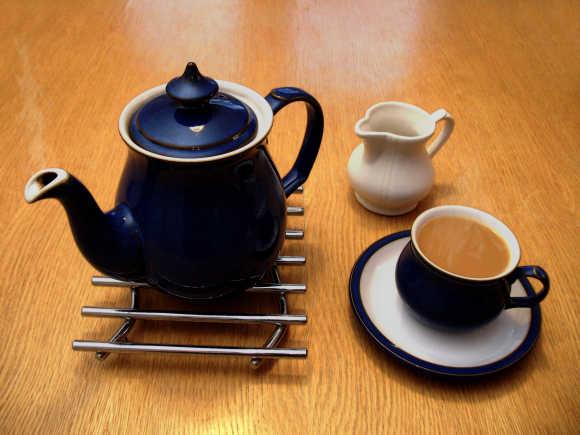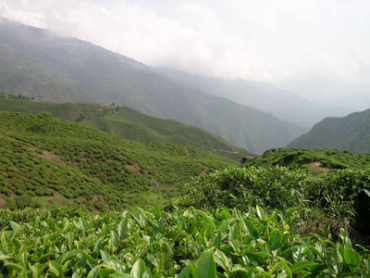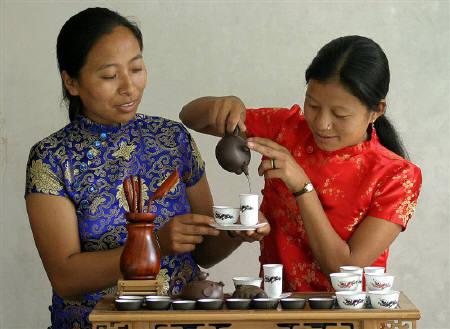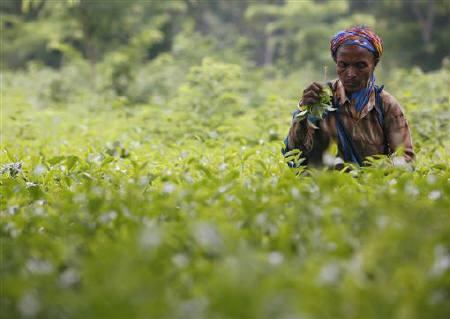Photographs: Courtesy, Wikimedia Commons Rutam Vora in Ahmedabad
Amid tight supply conditions and a dismal production scenario, tea retailers are considering increasing prices by eight to 10 per cent.
According to sources, warm weather conditions and irregular rainfall in the producing regions have resulted in widening of the demand-supply deficit.
India's output, 980 million kg in 2011-12, is thought likely to drop in the current year. "Irregular rain in the Northeast have hampered production.
Also, consumption demand is growing at an average (yearly) rate of five per cent, while the growth in tea production is barely three per cent, leading to widening of the demand-supply gap.
. . .
Why your chai is getting costlier
Image: Tea gardensPhotographs: Rediff Archives
Adding to this is input cost pressure, which is causing a price rise," said Piyush Desai, chairman of the Wagh Bakri group, a leading regional company.
On Monday, Wagh Bakri raised prices by Rs 12 a kg for its different categories, the second time it has done so in five weeks. On April 16, it had raised prices by another Rs 12 a kg.
By market estimates, tea prices for retail consumption have increased from an average of Rs 160 a kg in December 2003 to Rs 304 a kg now.
"A price rise is overdue; it has not risen at par with the inflation index.
There is a deficit in inventory because tea production has remained almost flat over the past three years.
. . .
Why your chai is getting costlier
Image: A tea garden worker (R) pours tea inside a tea garden estate in Siliguri.Photographs: Rupak De Chowdhuri/Reuters
"Also, input cost at the fields has increased over the years," said Azam Monem, director at McLeod Russel India, the world's largest producer.
Monem is also chairman of the export promotion and marketing committee of the Indian Tea Association.
"According to him, a rise in disposable income in rural areas has led to increased consumption of high-priced tea.
"Prices have increased at the auction centers. This will start reflecting in the retail prices from June onwards," said Harendra Shah of Girnar Tea. He said most regional companies would raise prices.
. . .
Why your chai is getting costlier
Image: A tea garden worker (R) pours tea inside a tea garden estate in Siliguri.Photographs: Jayanta Dey/Reuters
"Prices have already started increasing at the auction levels by about Rs 20 per kg, which will soon be reflected in the retail market.
"There is no old stock with the tea player and so, there is high supply deficit in the market," said Dinesh Biyani, secretary, Guwahati Tea Auction Buyers' Association.
The crop season starts from March and ends in December.
The initial four months, which contribute 20 per cent to annual output, are considered crucial for good quality production.July to October is when the majority of tea production (about 50 per cent) happens.
According to trade estimates, of the total annual production of about 980 million kg, India exports about 180 million kg (mostly orthodox quality tea), while it consumes about 800 million kg of tea annually.






article